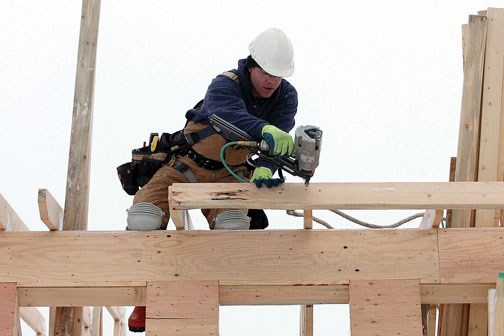Armed with the findings of a recently completed study, the city committee focused on reducing homelessness will spend the year creating a go-to resource for those looking to create more affordable housing.
The homelessness and affordable housing committee presented a rough sketch of its 2015 plan during Monday evening's meeting of council (sitting as committee of the whole).
Beginning in 2013, UNBC's Community Development Institute (CDI) embarked on a nearly 18-month process to conduct a housing need and demand study and complementary housing strategy framework.
The city commissioned the study to to understand current housing need and demand, forecast future housing need and demand and to develop options for future housing development.
Among the committee's goals for the year is to prepare an affordable housing developer's package, like the one compiled in Kamloops last year.
The Kamloops document was "created for developers and non-profit organizations in order to help them access the resources, programs and incentives that exist to promote the development of affordable housing."
Among the incentives Kamloops provides as a local government include an affordable housing reserve fund, wherein grants up to $150,000 are available to providers who want to build or buy rental housing specifically for low-income households. There are also exemptions on development cost charges for affordable housing units and below-market property sales or long-term leases if a proposed development provides affordable housing.
Private sector and non-profit groups are also encouraged to work together in the Kamloops plan.
"While the developer typically knows how to manage risk and has the experience necessary to carry out a successful project, the non-profit organization is often well-connected to the target population and can specify which amenities or features the development will require in order to meet the needs of future tenants," the Kamloops report says.
Last summer, the Prince George group changed its name from the Beyond Homelessness standing committee, acknowledging that one of the ways to prevent homelessness was to have available, affordable housing, said committee chair, Murry Krause.
The city has a 'housing first' policy, that focuses on getting people into permanent homes and then providing services as needed.
"So rather than keep doing the downstream stuff, we've moved into looking at affordable housing options in this community," he said. "The goal here is also not to abandon all the conversation that needs to take place around those who are currently homeless so we will be continuing to work with (Community Partners Addressing Homelessness) to ensure that work continues."
Krause said he was pleased with the committee's new direction.
"And I think we're getting out of the mode of 'waiting for somebody to help us,' to getting into the mode of 'let's start creating things in our community for ourselves and let's start looking at how we can make us more sustainable by engaging the development community in assisting to move affordable housing forward,'" he said.
As council heard on March 2 from CDI co-director Marleen Morris, the idea of affordable housing shouldn't just be limited to the government definition of homes that cost less than 30 per cent of a household's income.
To that end, Morris said CDI deliberately did not follow the example of housing studies in other communities that outlined how many affordable housing units Prince George requires.
"We think it furthers an out-of-date definition and approach to affordable housing," Morris said. "Affordable housing, rather than thinking about it as a defined number of units that we need, we would prefer communities to think about the need for a range of housing options that create affordable housing across the income spectrum." This includes senior executives to new families to seniors, she said.


